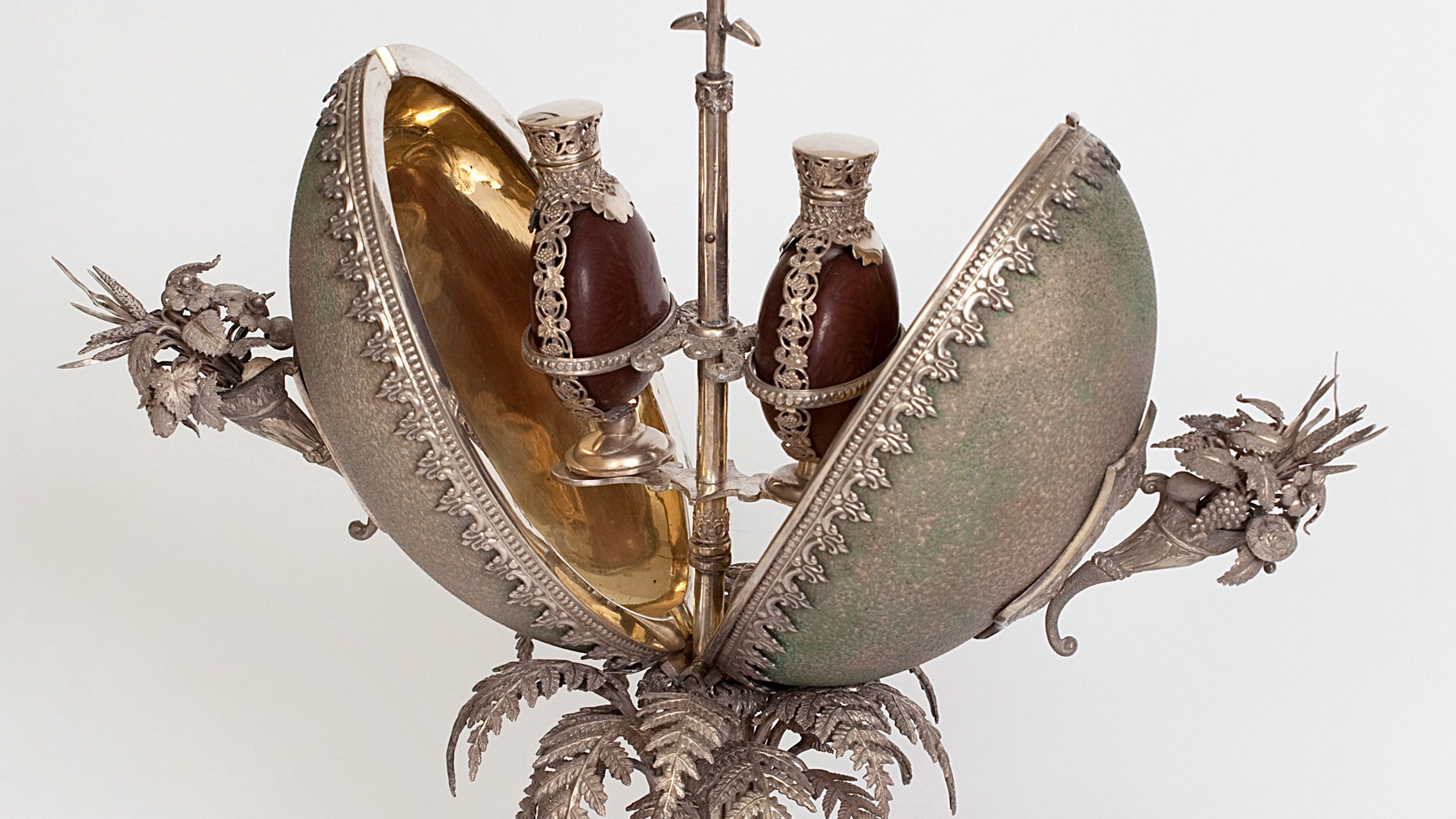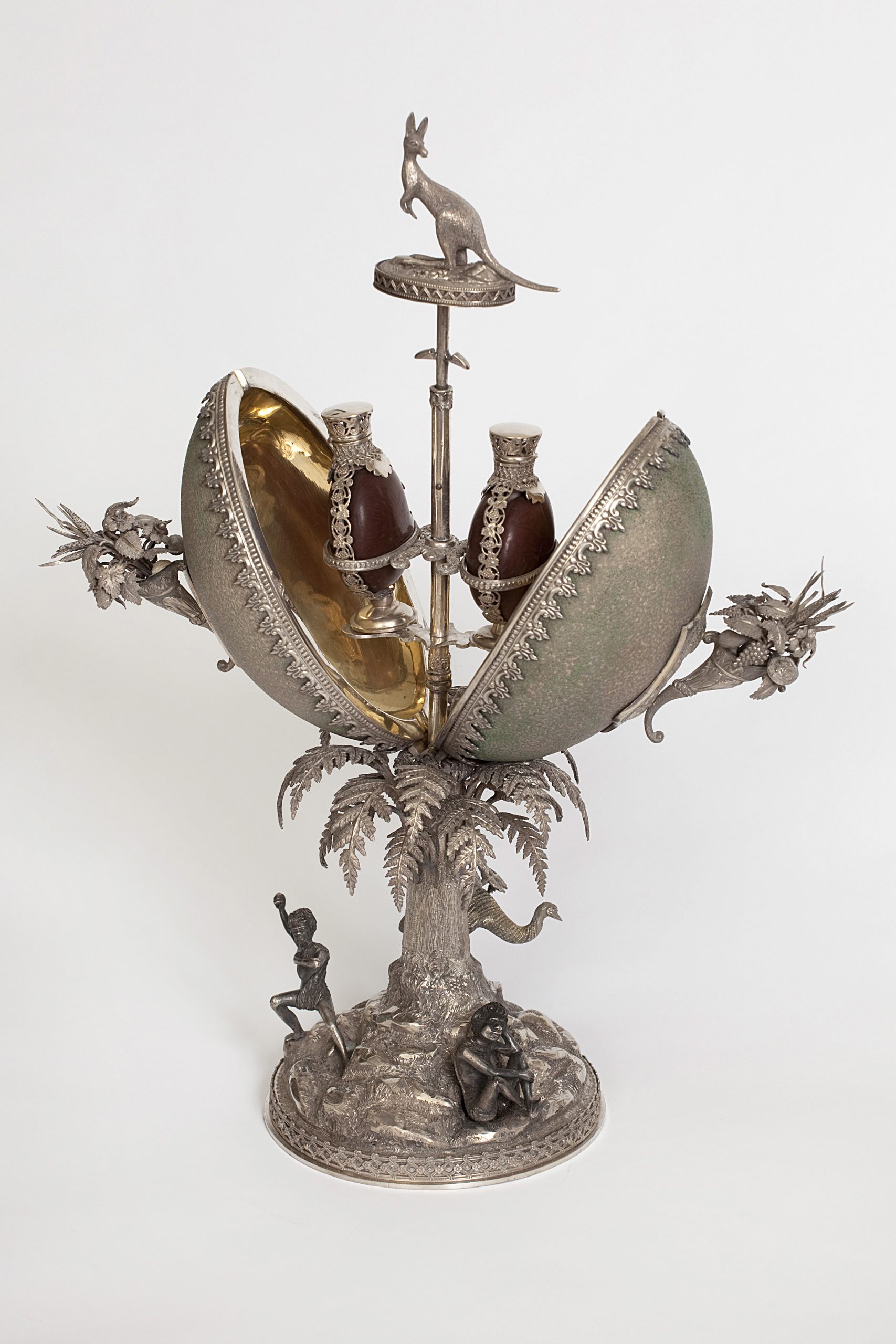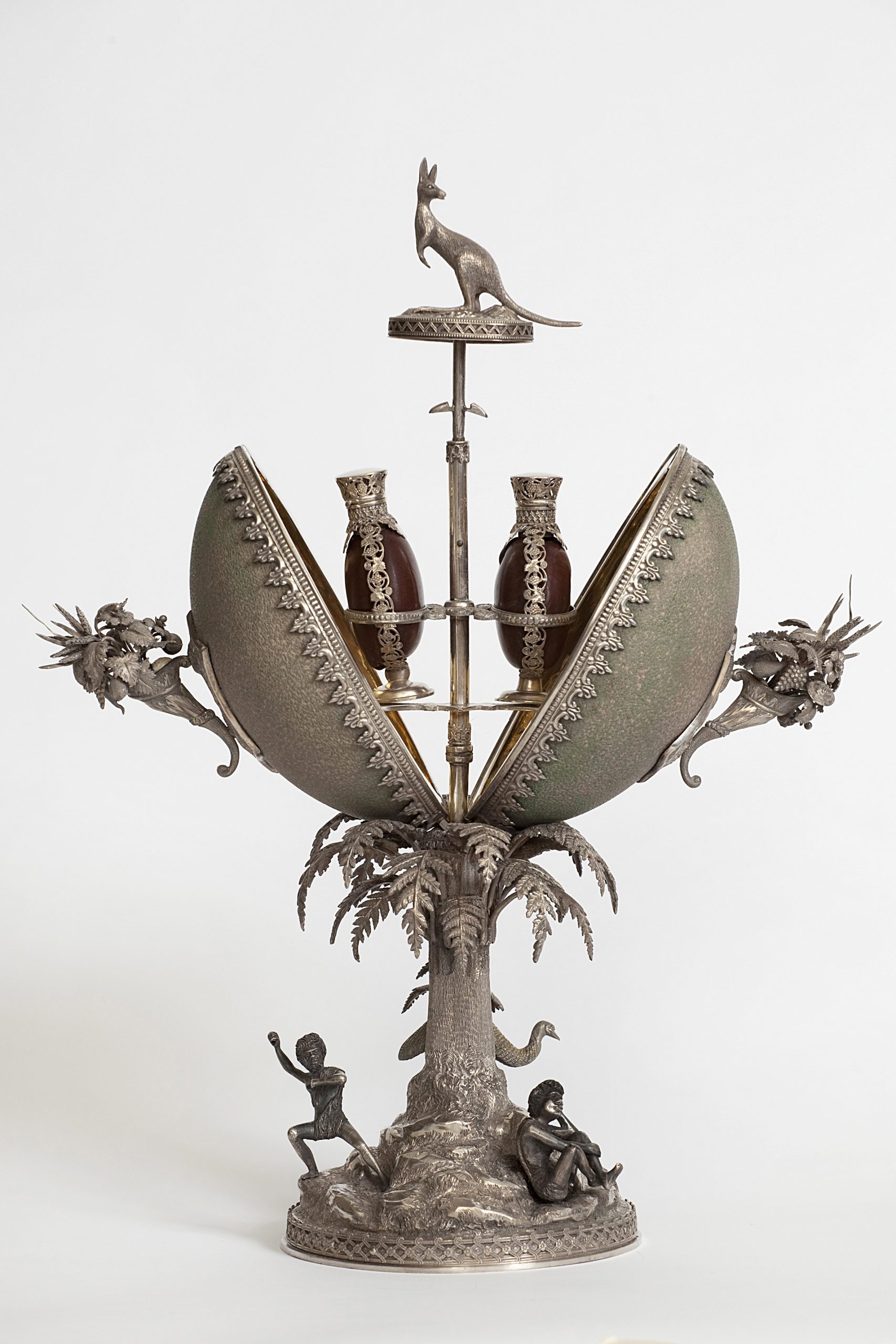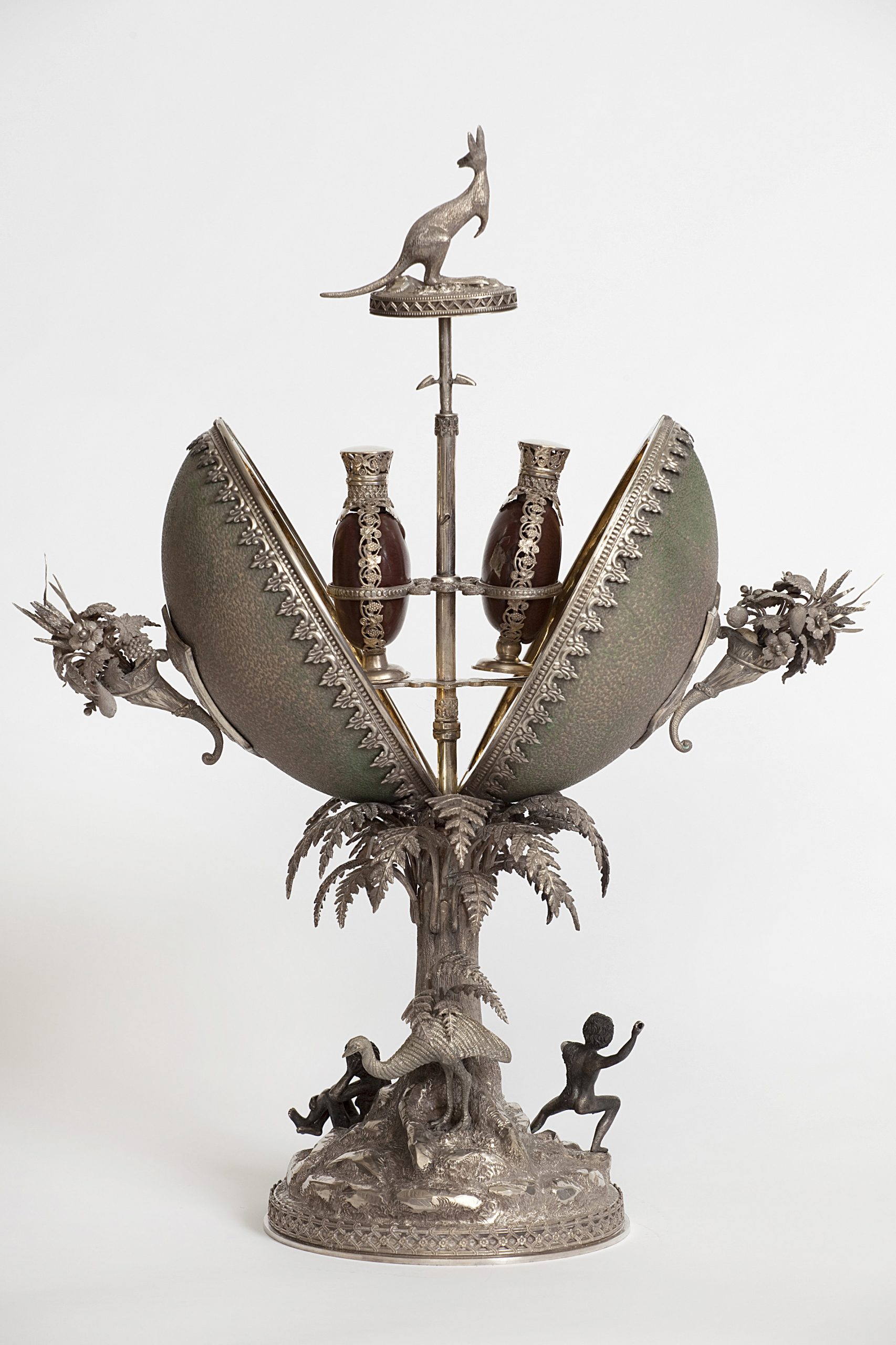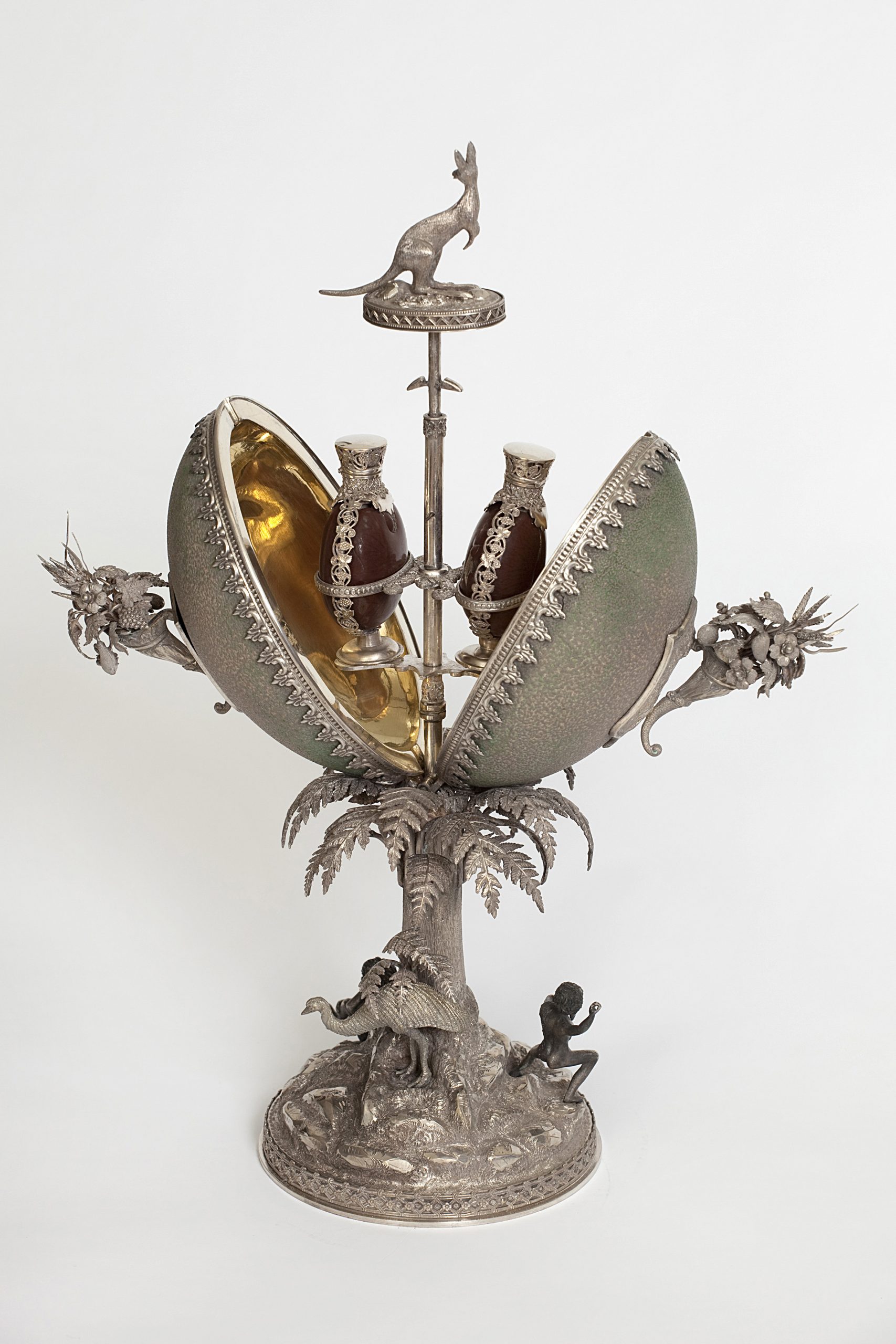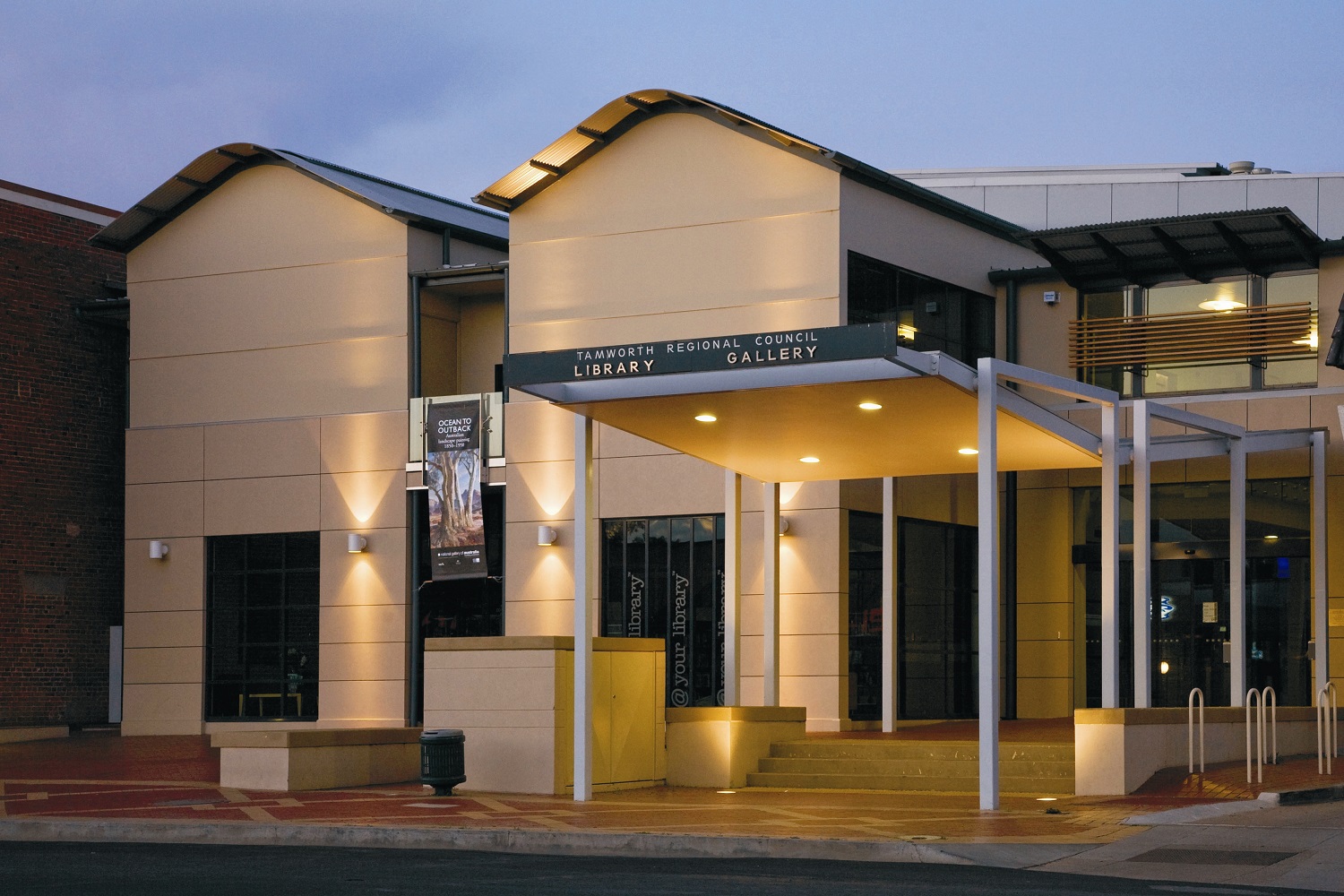Power and Perfume
Henry Steiner’s Grand Silverware
The mid-nineteenth century gold rush brought smiths and jewellers to Australia intent on reaping the benefits of a newly prosperous Australia. In 1858, Henry Steiner (1834-1914), a German silversmith, immigrated to Adelaide, South Australia, for that very reason.
Now known as one of Australia’s most prolific silversmiths, much of his success was made possible by the discovery of silver at Broken Hill, New South Wales. His work ranged from simple, general sale pieces to intricate display pieces which featured unique materials, such as this perfume holder.
A silver-gilt lined emu egg is at the centre of this design. Cut in two, the egg is hinged so that it can enclose two scent bottles made from the beans of a Queensland tree. Native flora and fauna, accompanied by figures of Aboriginal people, adorn the holder.
Right through to the end of the century, grand silverware was for Australia’s richest and, more often, presented as a customary gift to elites visiting from Europe. Silverware spoke to a burgeoning settler culture in the country, one which appealed to European sensibilities while conveniently advertising the mineral wealth of the colony itself.
While figures of Aboriginal people and native flora and fauna were being used as distinguishing design elements in Australian silverware, colonisation continued to actively harm and dispossess Aboriginal populations and disregard sovereignty in pursuit of financial gain. Simply put, objects like this were a politically useful way of presenting Australia as a new land of opportunity, which in turn generated more wealth.
In 1883, Steiner experienced the loss of his wife and two children from typhoid – a disease which arrived on the continent along with settlement. This led to Steiner selling his business and returning to Germany in the following year. Today, his work is considered an iconic example of colonial decorative arts.


